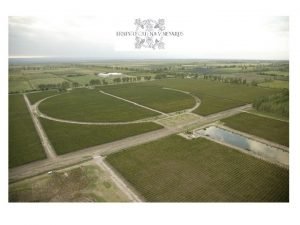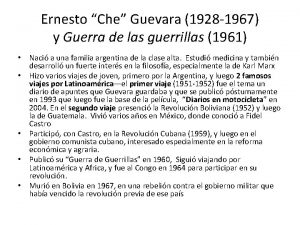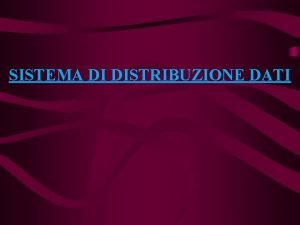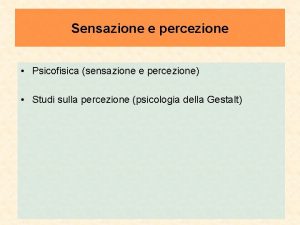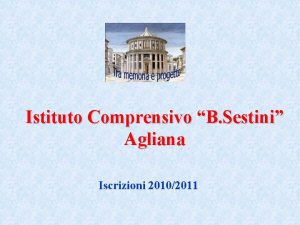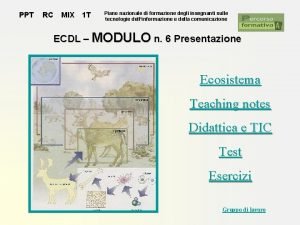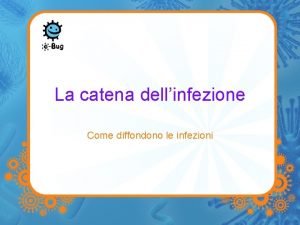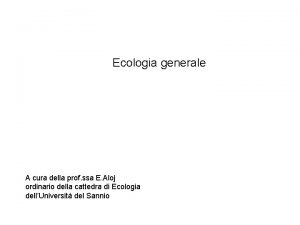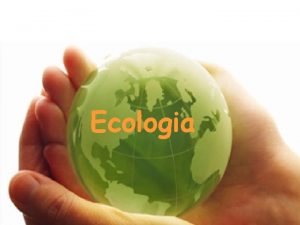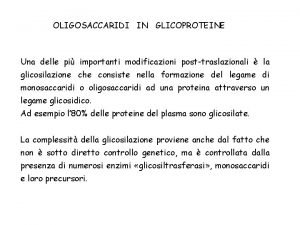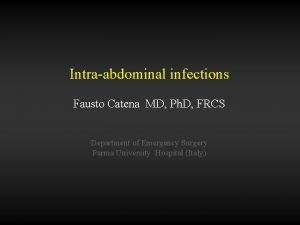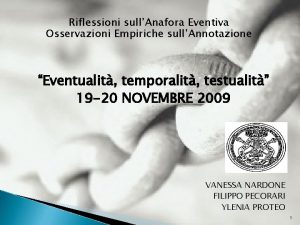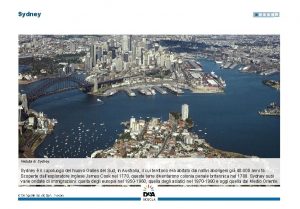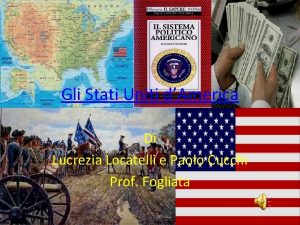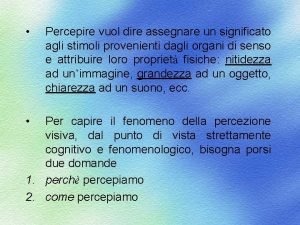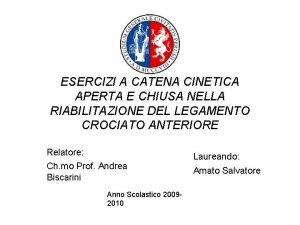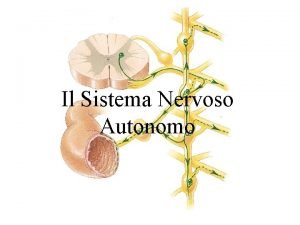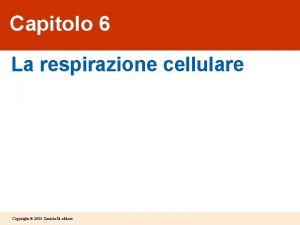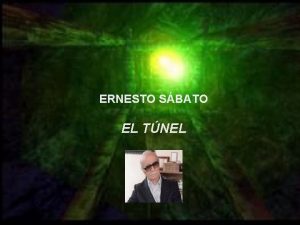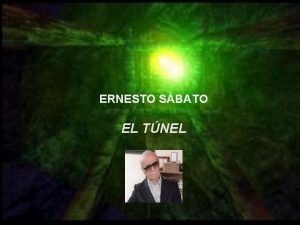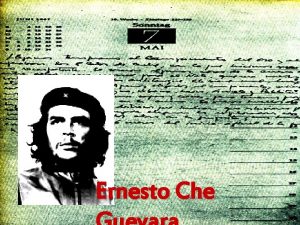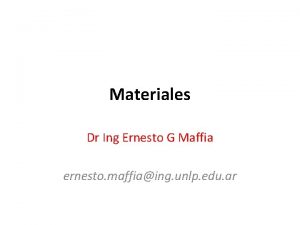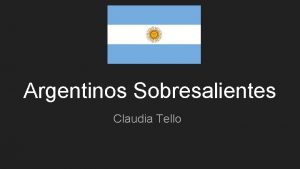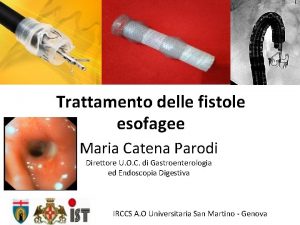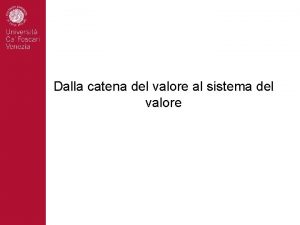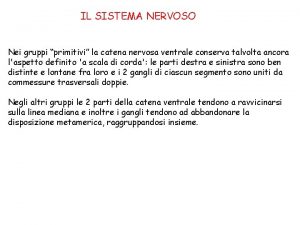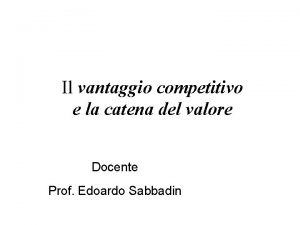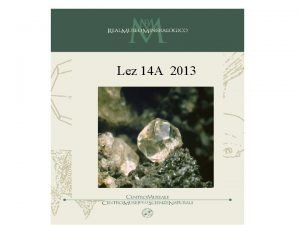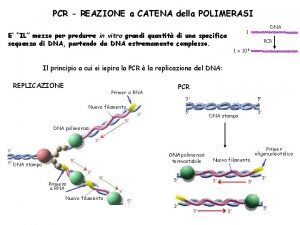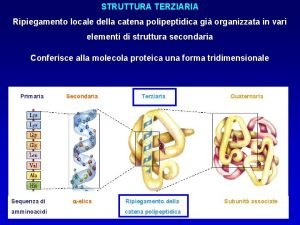Who is Ernesto Catena Ernesto Catena is a




















- Slides: 20


Who is Ernesto Catena? • Ernesto Catena is a 4 th Generation winegrower. • Part of one of Argentina most traditional wine families. • Lived and travelled around the world for many years. • Bachelor in Computer Science and Economy, Master in Design in Milan, and a degree in History in London. • Passionate for animals and nature. • Tireless reader, painter, art collector: “an spectator of beauty, dead or alive” Most of the times beauty is my guiding star” “Don’t just make the wine, be the wine”

Ernesto Catena Vineyards (ECV) - The birth of a Renaissance enterprise - • While being President of one of Arg largest wineries, Ernesto felt the need of a “Paradigm Shift” (a change of basic assumptions) and decided to start producing small volume of wines under 3 new premises: • Focus in growing high quality grapes in the most natural way possible. • Search for a different style in the wines, that would reflect his personality. • Create very strong branding concepts, that consumers would feel indentified with. • Most of the grape comes from “Finca La Intensidad”, Ernesto Catena’s vineyard, located in Vistaflores.

FINCA LA INTENSIDAD • • “the prettiest biodynamic vineyard in South America. ” Located in the heart of Vistaflores (1090 msnm) Only half of the property planted, to preserve a balance with the ecosystem. Planted with: Malbec, Cab Sauv, Syrah, Cab Franc, Pinot Noir and Chardonnay.

IN PEACE WITH THE ENVIROMENT • Certified full organic in 2011 (Letis) • Certified biodynamic in 2012 (Demeter)


Winemaking • • ECV Winery is a project of two stages: • 1: The Champagnerie (completed) • 2: The winery (under design) Today we crash our grapes in a winery across the street. We select the best wines and sell the remaining. Our winemaker is Bernardo Bossi.

ECV wines 3 Lines of wines with very different concepts Premium and Ultra Premium Varietal wines Focused in Malbec Blends Focused in Bonarda Blends

Siesta wines are our tribute to the Inca civilization and their respect for the land. • • • The Incas had the tradition of burying things as a gift to Gods to keep land fertile. To continue the tradition, we bury bottles of wines in our vineyard to sleep a “Siesta”, and keep our vineyard fertile. Siesta wines are our best expression of varietal character.

Tahuan wines is our way to express the varietal diversity of Mendoza’s terroir • • • Tahuan is an abbreviation from “Tahuantinsuyu” which means in quechua (Inca language) “the four lands united”. we have 4 varietals, corresponding to the 4 regions of the Tahuantinsuyu, the Inca empire of the Andes. Each of the varietals are made to best express the unique varietal character of the 4 widest planted grapes in Mendoza.

MALBEC TORRONTES Padrillos wines express the wild spirit of Argentina’s true varietals. • • “Padrillo” means Stallion in Spanish. The wines are inspired in Ernesto Catena’s passion for the horse. “Man's conquest of the horse signifies his conquest of Nature, and the responsibility this conquest carries within. Mainly, to take care of our subject, Nature. ” Ernesto is an avid horseman, polo player and breeder of polo horses.

PADRILLOS TORRONTES 2011 Production Area: Cafayate, Salta. Elevation of the vineyards: 1. 300 mts. Harvest time: Last week of February. Type of Maceration: No. Total time of Maceration: No. Temperature of Fermentation: between 10 -13 °C Time in oak: no oak. Type of oak: Alcohol: 13. 5 % by vol. Residual sugar: 2. 6 g/l. Ph: 3. 53

PADRILLOS MALBEC 2011 Production Area: Uco Valley, Mendoza. Elevation of the vineyards: 1. 000 mts. Harvest time: Last week of March, first of April. Type of Maceration: Pre-fermentative cold maceration. Total time of Maceration: 15 days. Temperature of Fermentation: between 26 -28 °C Time in oak: 8 months. Type of oak: 50% French – 50% American. 10% new – 40% 2 nd and 3 rd use. Alcohol: 13. 5 % by vol. Residual sugar: 2. 4 g/l. Ph: 3. 72

TAHUAN CHARDONNAY 2010 Production Area: Altamira, San Carlos, Mendoza. Elevation of the vineyards: 1. 100 mts. Harvest time: First week of March. Type of Maceration: No. Total time of Maceration: No. Temperature of Fermentation: between 10 -13 °C. Time in oak: 8 months. Type of oak: 50% French – 50% American. 10% new – 40% 2 nd and 3 rd use. Alcohol: 13. 7 % by vol. Residual sugar: 2. 5 g/l. Ph: 3. 55

TAHUAN BONARDA 2010 Production Area: La Vendimia, Rivadavia, Mendoza. Elevation of the vineyards: 700 mts. Harvest time: Last week of March. Type of Maceration: Pre-fermentative cold maceration. Total time of Maceration: 21 days. Temperature of Fermentation: between 28 -30 °C. Time in oak: 10 months. Type of oak: 50% French – 50% American. 30% new – 40% 2 nd and 3 rd use. Alcohol: 13. 7 % by vol. Residual sugar: 2. 1 g/l. Ph: 3. 80

TAHUAN MALBEC 2010 Production Area: Vistaflores, Tunuyan, Mendoza. Altamira, La Consulta, Mendoza. Elevation of the vineyards: 1. 000 / 1. 100 mts. Harvest time: Last two weeks of April. Type of Maceration: Pre-fermentative cold maceration. Total time of Maceration: 21 days. Temperature of Fermentation: between 28 -30 °C. Time in oak: 10 months. Type of oak: 50% French – 50% American. 30% new – 40% 2 nd and 3 rd use. Alcohol: 13. 7 % by vol. Residual sugar: 2. 4 g/l. Ph: 3. 74

TAHUAN CABERNET SAUVIGNON 2010 Production Area: Vistaflores, Tunuyan, Mendoza. Altamira, La Consulta, Mendoza. Elevation of the vineyards: 1. 000 / 1. 100 mts. Harvest time: Last two weeks of April. Type of Maceration: Pre-fermentative cold maceration. Total time of Maceration: 21 days. Temperature of Fermentation: between 28 -30 °C. Time in oak: 10 months. Type of oak: 50% French – 50% American. 30% new – 40% 2 nd and 3 rd use. Alcohol: 13. 7 % by vol. Residual sugar: 2. 4 g/l. Ph: 3. 78

SIESTA MALBEC 2009 Production Area: Vistaflores, Tunuyan, Mendoza. Elevation of the vineyards: 1. 000 mts. Harvest time: Last week of April. Type of Maceration: Pre-fermentative cold maceration. Total time of Maceration: 25 days. Temperature of Fermentation: between 28 -30 °C. Time in oak: 14 months. Type of oak: 70% French – 30% American 70% new – 30% 2 nd and 3 rd use. Alcohol: 13. 8 % by vol. Residual sugar: 2. 0 g/l Ph: 3. 73

SIESTA CABERNET SAUVIGNON 2009 Production Area: Vistaflores, Tunuyan, Mendoza. Elevation of the vineyards: 1. 000 mts. Harvest time: Last week of April. Type of Maceration: Pre-fermentative cold maceration. Total time of Maceration: 25 days. Temperature of Fermentation: between 28 -30 °C. Time in oak: 14 months. Type of oak: 80% French – 20% American 70% new – 30% 2 nd and 3 rd use. Alcohol: 13. 8 % by vol. Residual sugar: 2. 1 g/l Ph: 3. 75

Thanks for your time
 Tahuan malbec
Tahuan malbec 1967-1928
1967-1928 Sistema di acquisizione e distribuzione dati
Sistema di acquisizione e distribuzione dati Catena psicofisica
Catena psicofisica Istituto comprensivo sestini agliana
Istituto comprensivo sestini agliana Bioriduttori
Bioriduttori Catena dell'infezione
Catena dell'infezione Catena alimentare fiume scuola primaria
Catena alimentare fiume scuola primaria Produttori catena alimentare
Produttori catena alimentare Catena gangliare paravertebrale
Catena gangliare paravertebrale Catena oligosaccaridica
Catena oligosaccaridica Fausto catena
Fausto catena Catene alimentari scuola primaria
Catene alimentari scuola primaria Catene anaforiche
Catene anaforiche Il capoluogo del galles
Il capoluogo del galles La catena usa con il monte rushmore
La catena usa con il monte rushmore Catena psicofisica definizione
Catena psicofisica definizione Esercizi a catena cinetica chiusa significato
Esercizi a catena cinetica chiusa significato Soil catena
Soil catena Pregangliare
Pregangliare Chemiosmosi zanichelli
Chemiosmosi zanichelli
